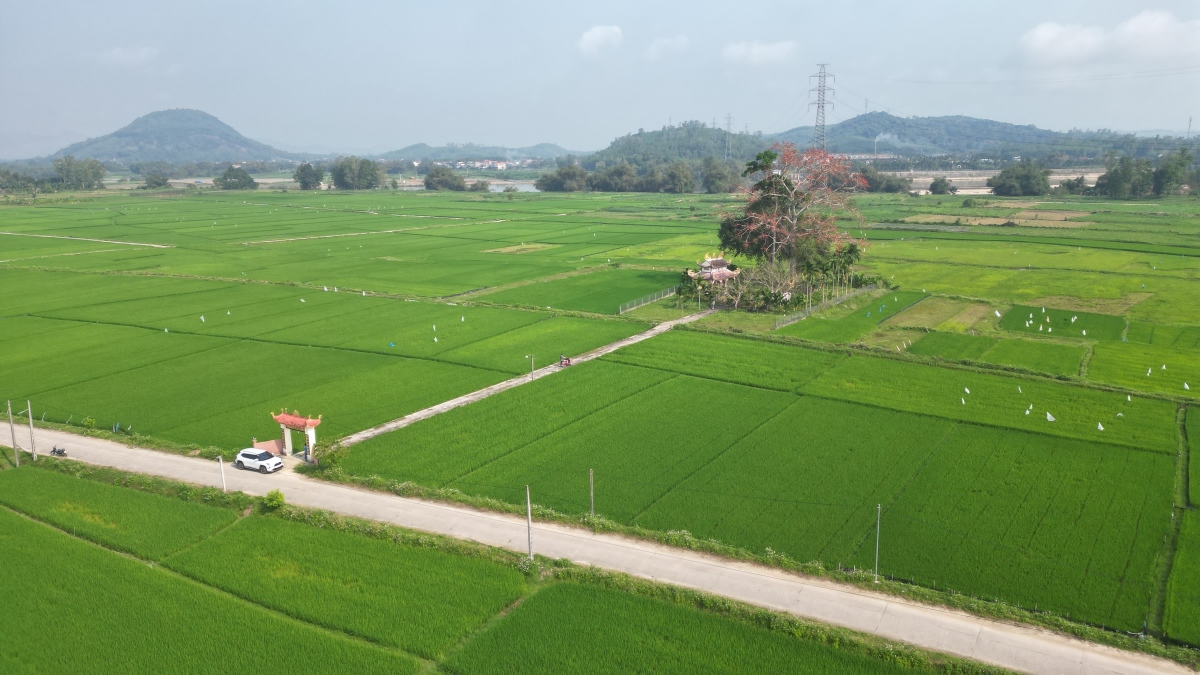
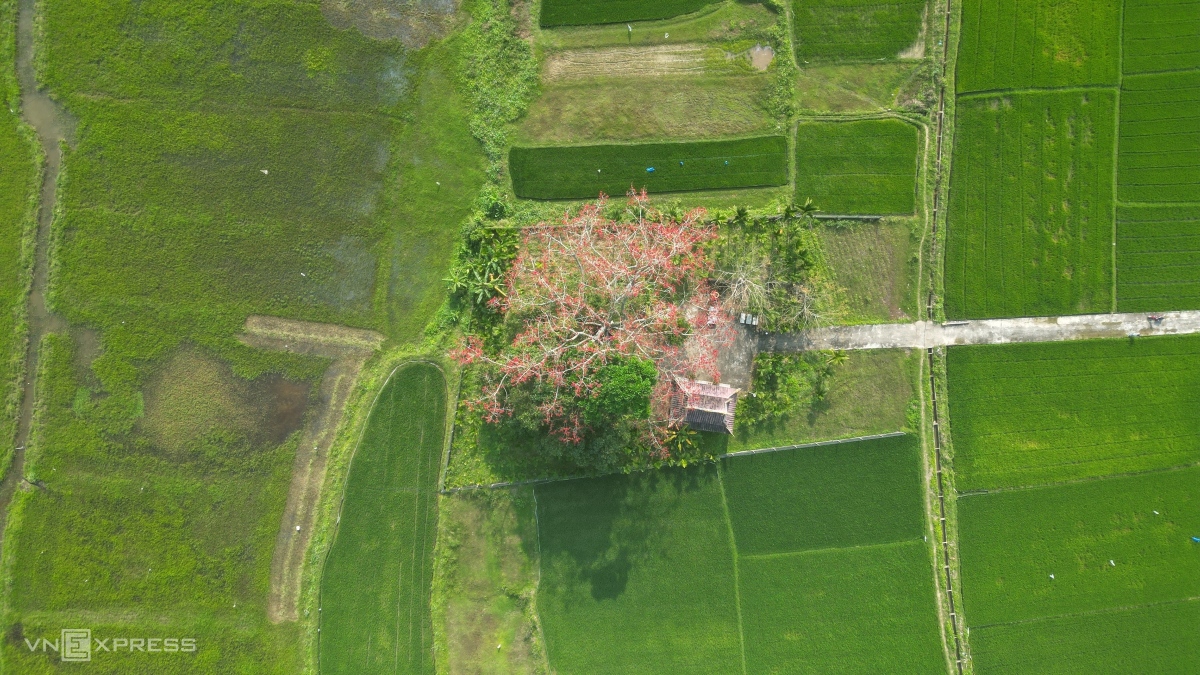
The tree stands next to a small shrine.
Mr. Nguyen Hoang, 74, the caretaker of the shrine, shared that the area used to be known as Bau Vung, located next to an old ferry terminal. The ferry used to transport people from Nghia Thang on the south bank of the Tra Khuc River to Tinh Son on the north bank. The ferry is long gone, and the riverbank has been filled in, leaving the shrine and the tree farther from the river’s edge.
“Over 200 years ago, there was a ferry accident, and the locals erected a small shrine to commemorate the victims. Then, over a hundred years ago, the silk-cotton tree grew beside the shrine, eventually reaching a height that overshadowed the original structure,” Mr. Hoang recounted, sharing a story passed down through oral tradition.
Because the tree was considered sacred by the villagers, they chose not to cut it down but instead built a new shrine next to it.
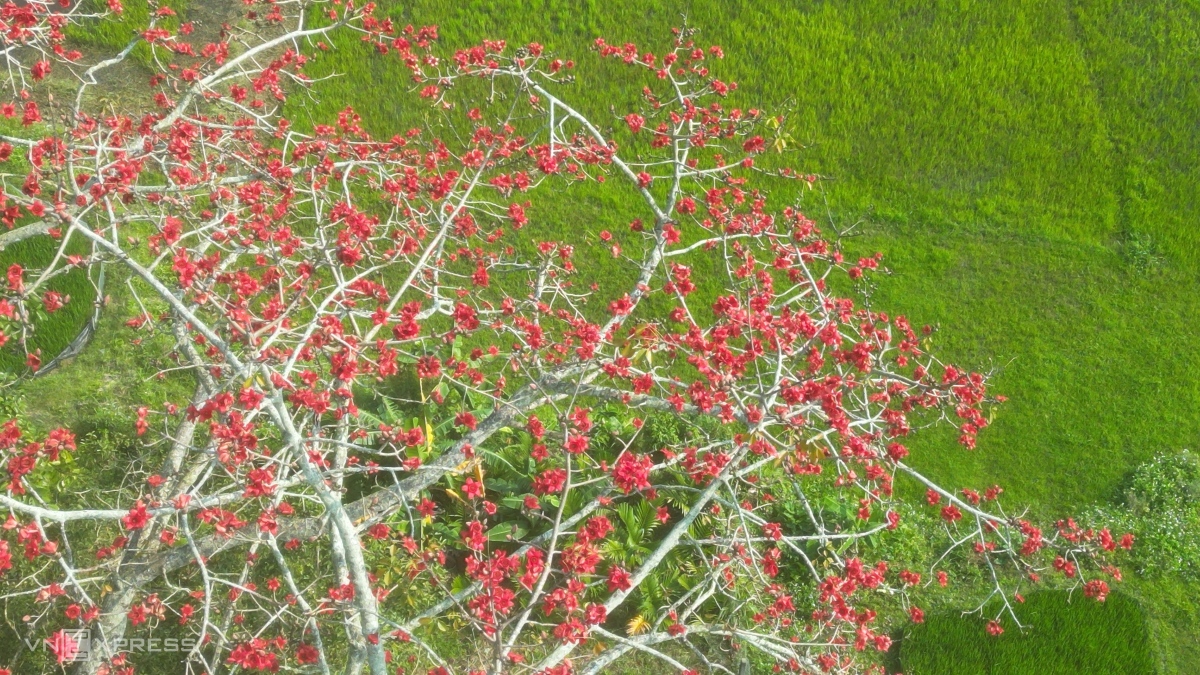
The silk-cotton tree stands out with its bright red flowers against the green backdrop of the rice fields.
Mr. Vo Van Sau, 74, a local resident, mentioned that this particular silk-cotton tree usually blooms from Tet (Lunar New Year) to March, earlier than most other silk-cotton trees.
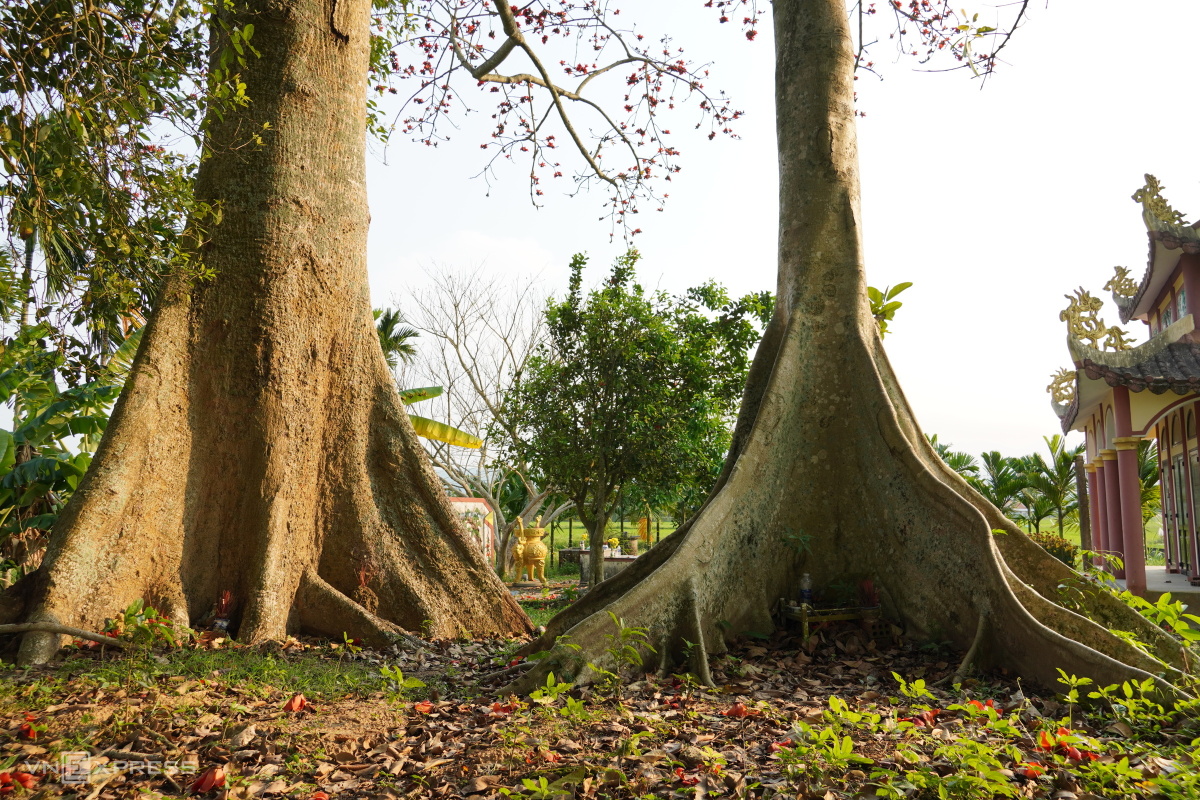
Next to the silk-cotton tree (left) is a milkfruit tree (right), both of which are ancient trees protected by the locals. The silk-cotton tree’s trunk has a diameter of about 3 meters.
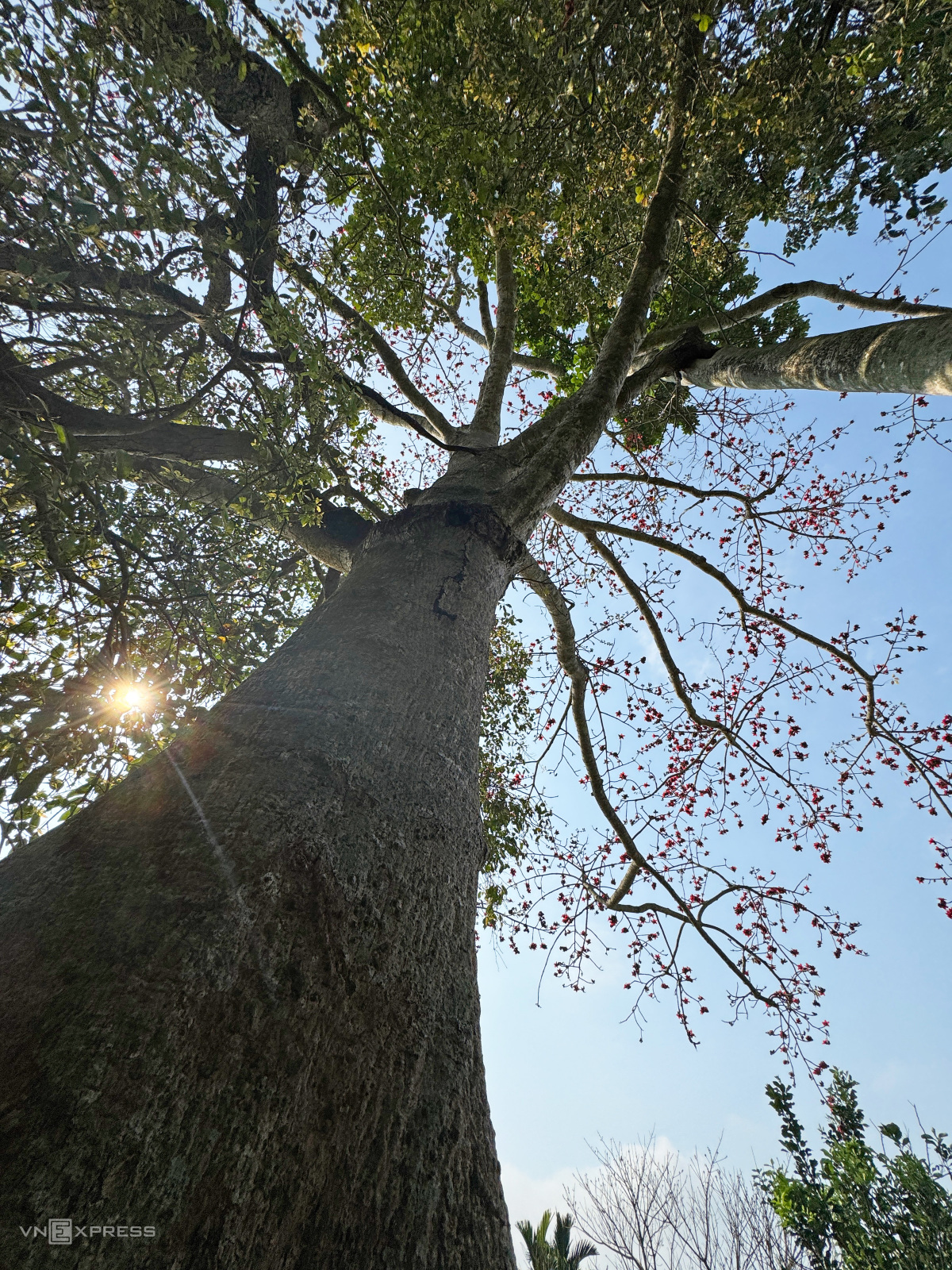
Standing at over 20 meters tall, the silk-cotton tree boasts multiple large canopies filled with dense clusters of flowers. Various bird species are attracted to the tree, creating a symphony of birdsong in the fields.
The silk-cotton tree, also known as the red cotton tree, mộc miên, or pơ-lang (scientific name Bombax ceiba), is a large deciduous tree belonging to the Malvaceae family. It typically grows to heights of 10 to 20 meters, with a straight trunk, sharp spines, and palmately compound leaves.
The flowers of the silk-cotton tree are a vibrant reddish-orange, with thick petals that grow in clusters at the end of the branches. They usually bloom in March and April, signaling the transition from spring to summer. When the flowers wither, the tree produces pods filled with soft, white fibers similar to cotton, which are used for stuffing pillows and cushions.
In Vietnam, the silk-cotton tree is intimately linked to rural life and temples, carrying spiritual significance. In folk culture, the silk-cotton tree’s flowers are known as “March flowers” due to their tendency to bloom profusely during this month.
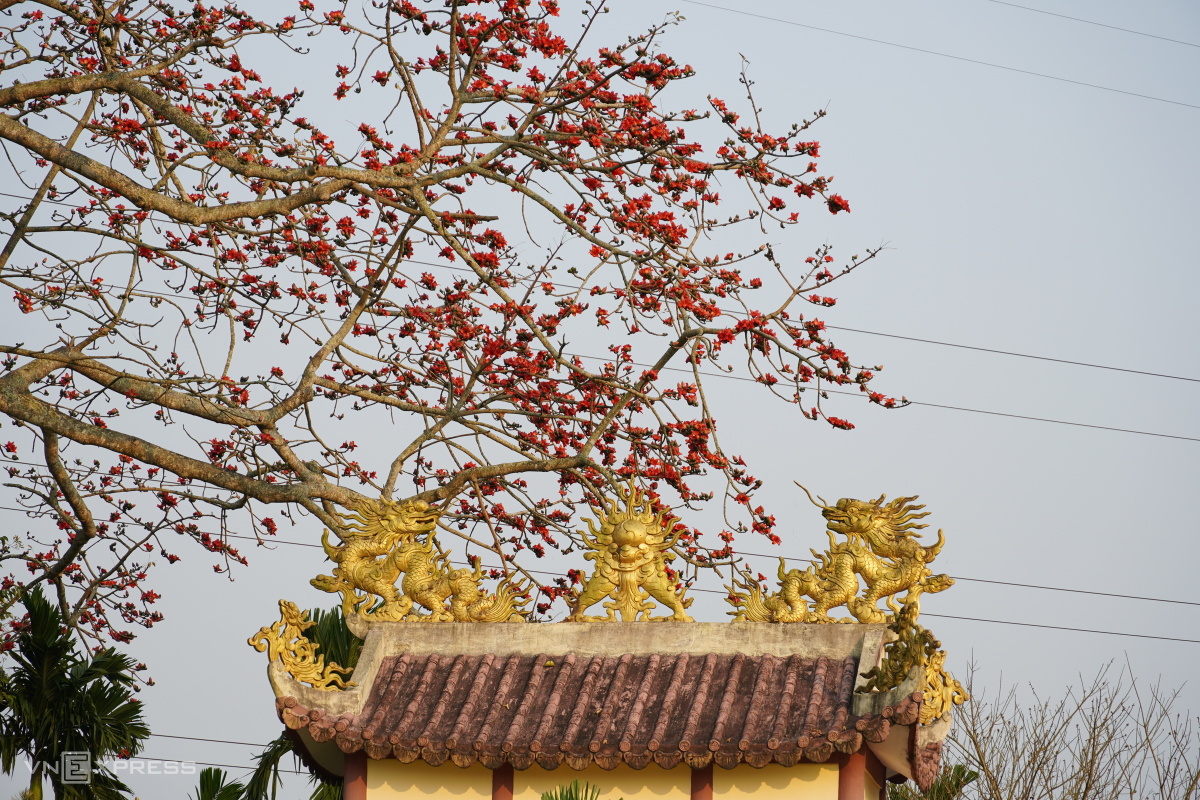
The tree is protected by the locals, along with the shrine. The tree’s beauty enhances the allure of the Bau Vung shrine.
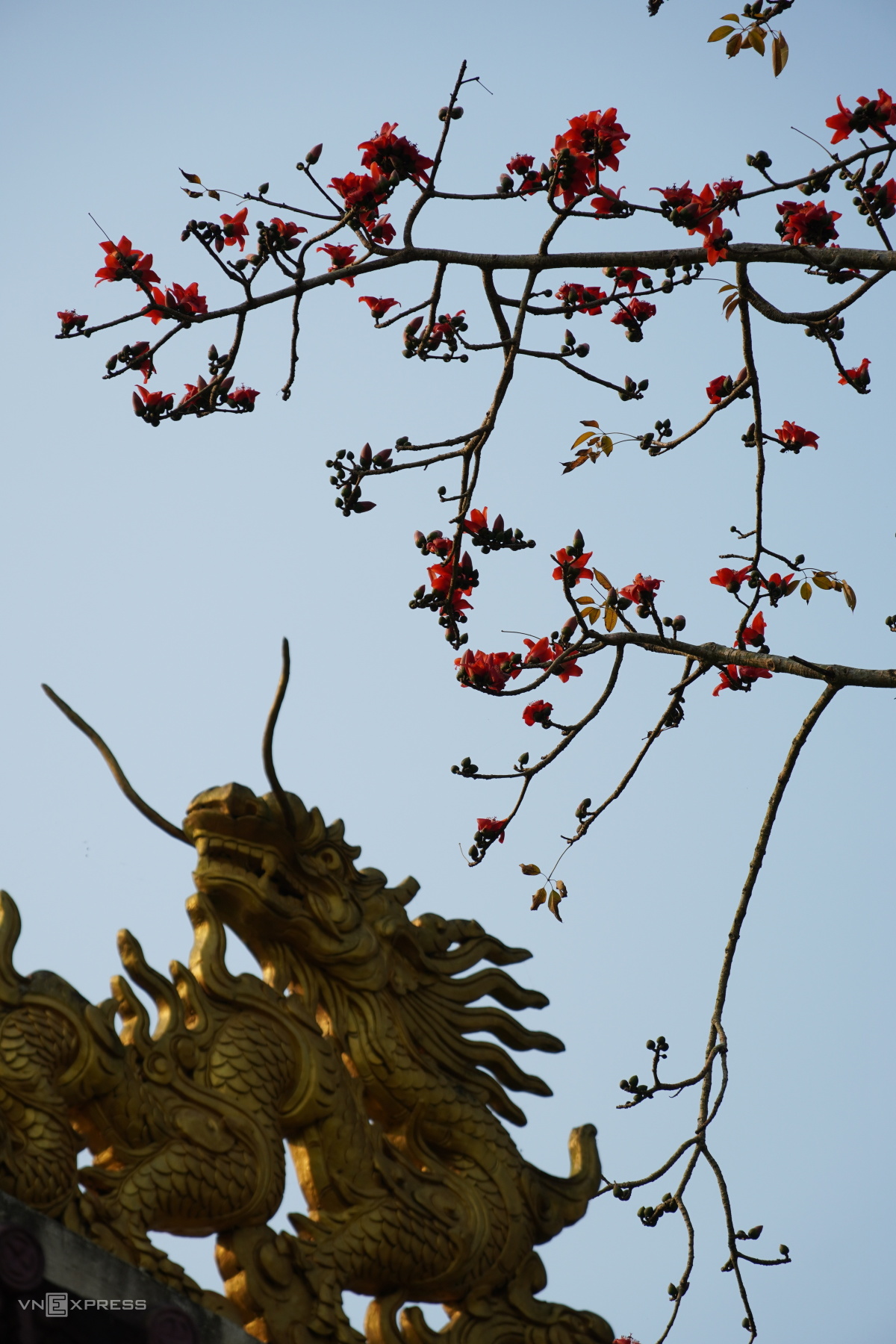
The shrine next to the silk-cotton tree was rebuilt nearly a decade ago, and its intricate carvings were crafted by an artisan from Hue.
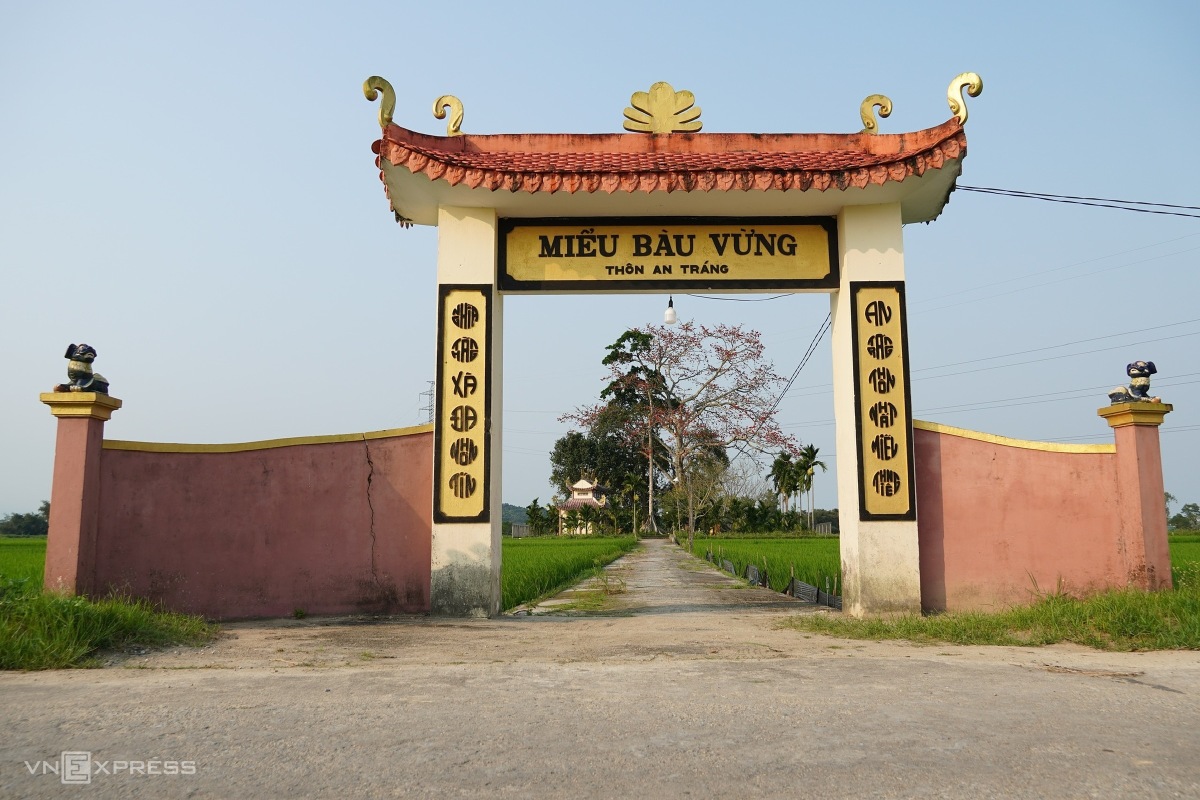
The Bau Vung shrine’s entrance is located along the road leading to the People’s Committee of Nghia Thang commune.
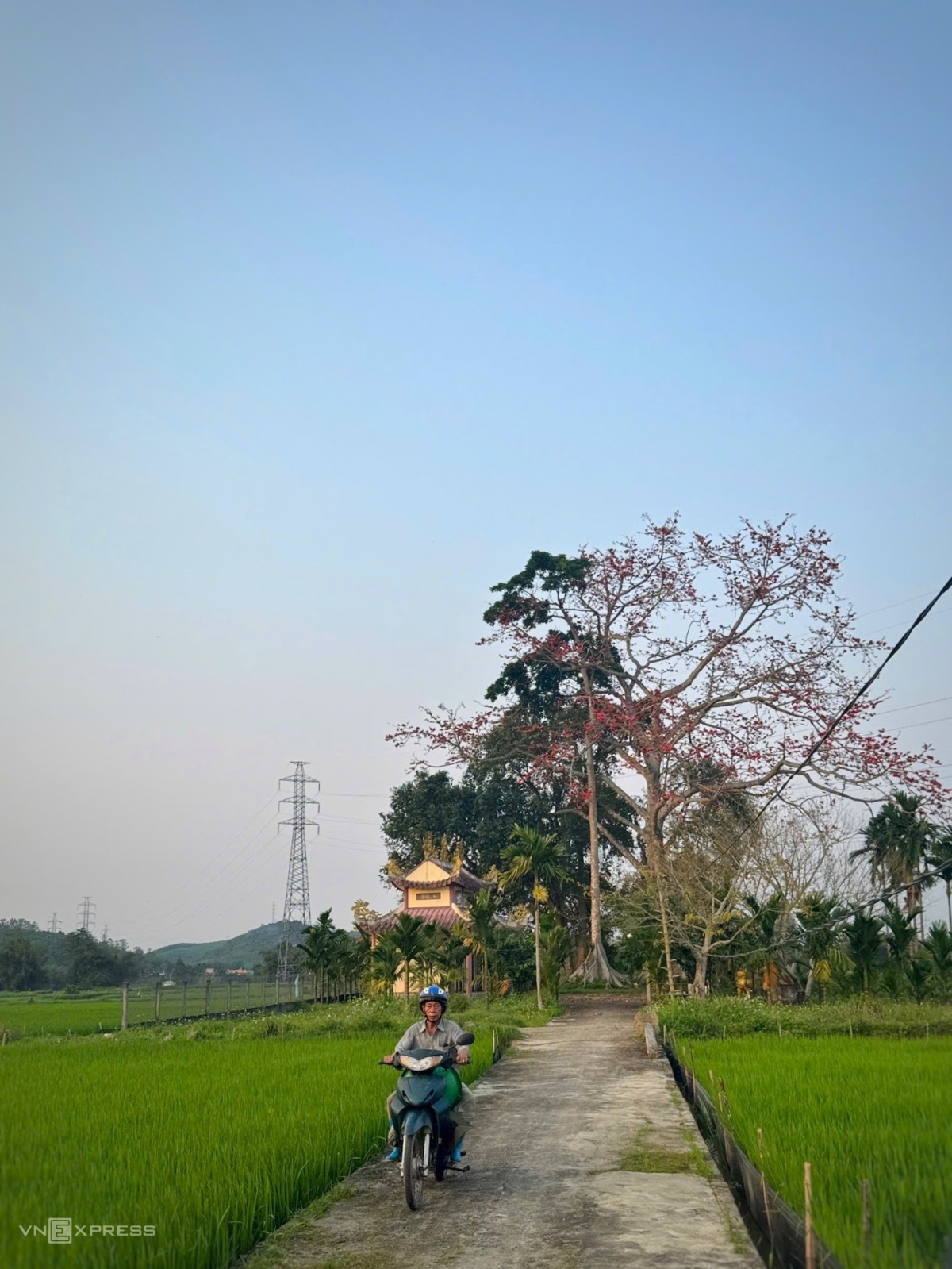
According to locals, the shrine is integral to the spiritual life of the village, and its location along a well-traveled path ensures that “this place is never lonely.”
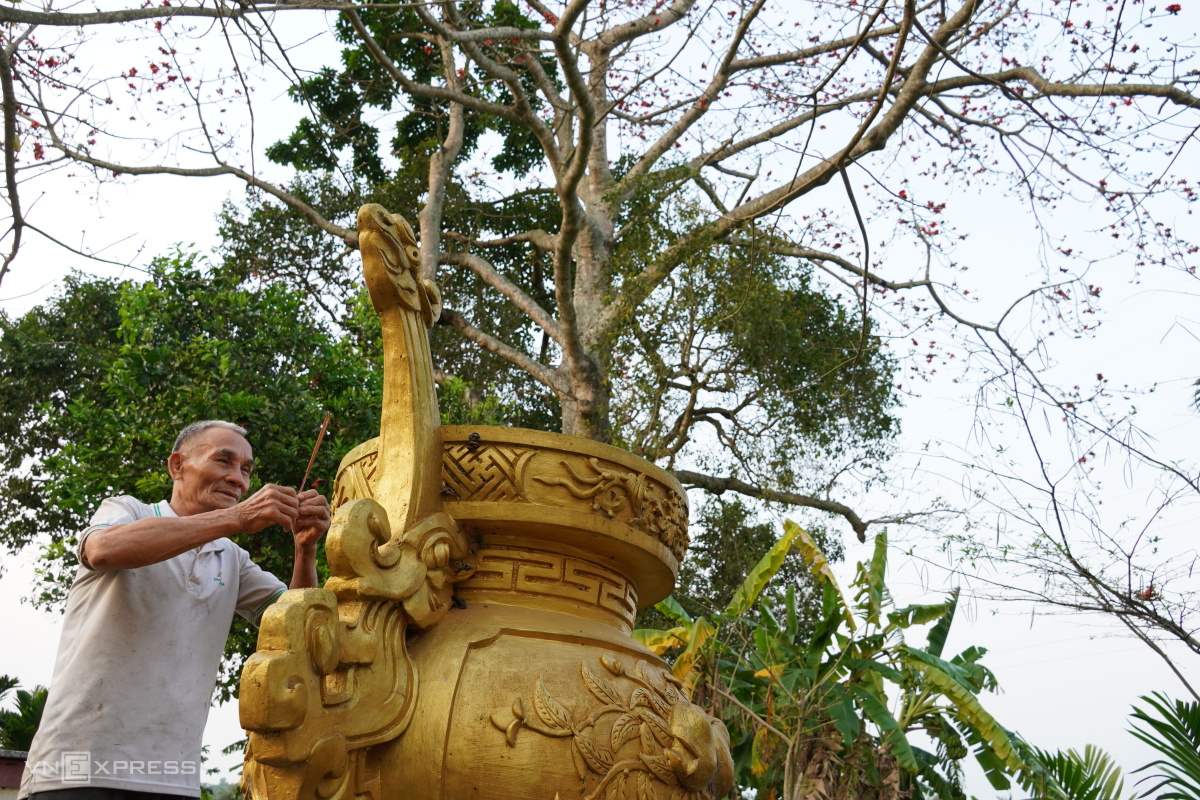
Mr. Hoang shared that the shrine’s management committee consists of about 20 people, three of whom are responsible for cleaning and rituals. The entire village contributes to the shrine’s upkeep and rituals, each according to their means.
“On the first and fifteenth days of the lunar month, people often come to burn incense and pray for peace. On the 10th of March, the death anniversary of Hung Kings, and the 25th of the twelfth lunar month, we hold rituals and erect a ceremonial gate,” Mr. Hoang added.
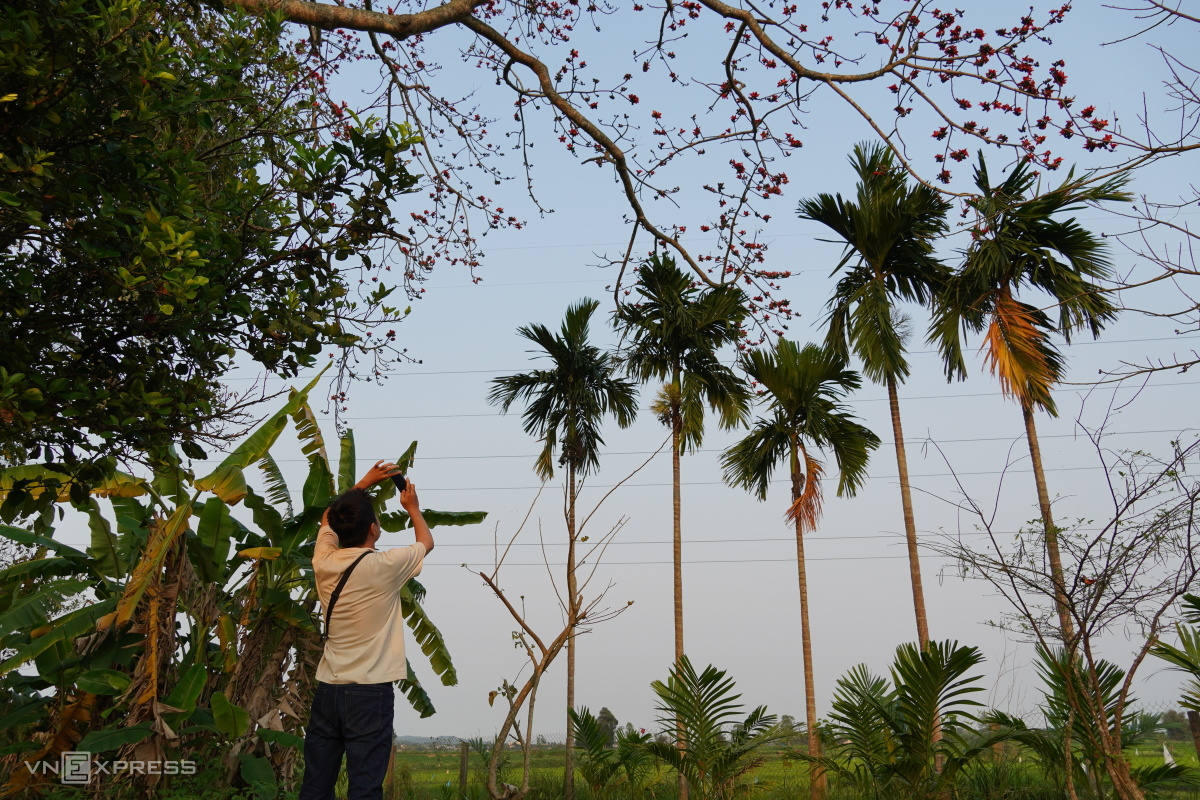
Thanks to its stunning beauty amid the fields, the silk-cotton tree and the Bau Vung shrine have become a popular destination for locals and visitors from the region, attracting many photographers.
Mr. Tran Vuong Quang, a resident of Le Hong Phong ward in Quang Ngai city, shared his enthusiasm for the silk-cotton tree’s flowers. He traveled 15 kilometers from the city to Nghia Thang commune to capture photographs, which he then shared with his friends. “After posting the pictures, many people expressed their interest and asked for the tree’s location so they could also take photos,” Mr. Quang said.
Locals recount the history of the silk-cotton tree. Video: Pham Linh






























